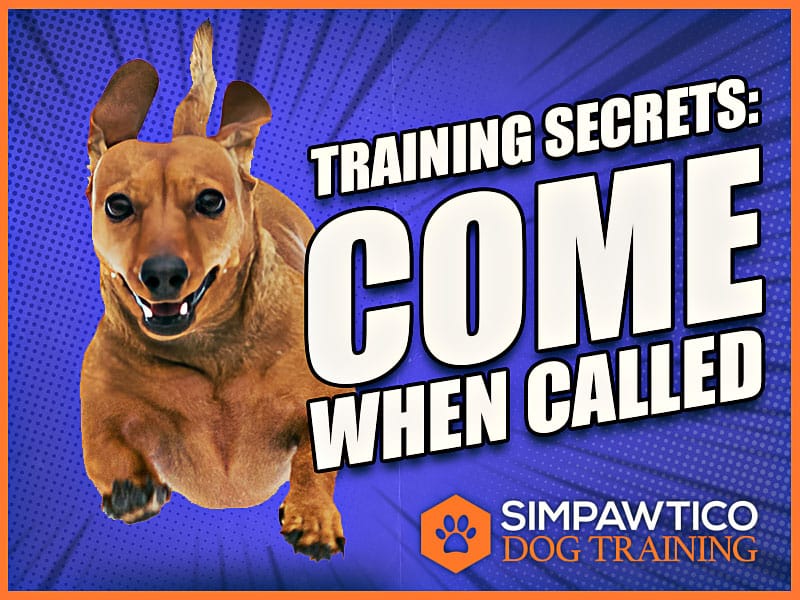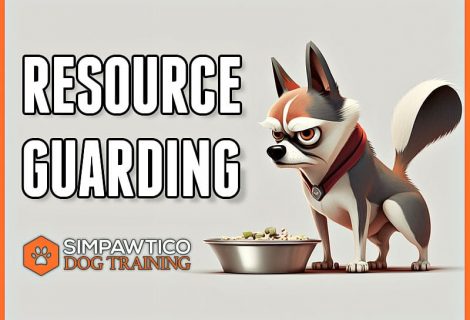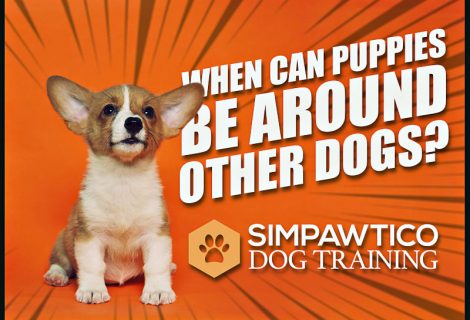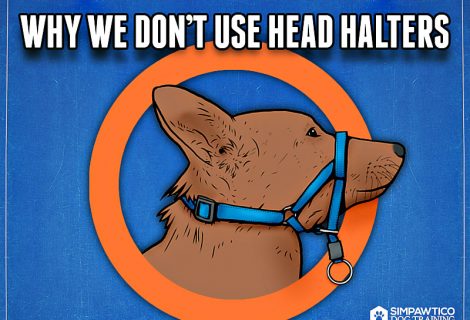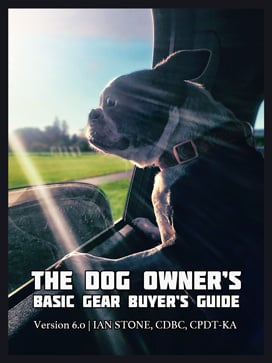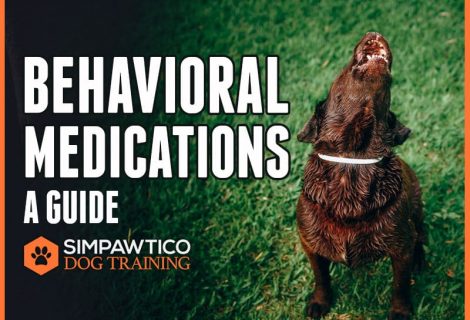Secrets of Dog Training: Come When Called
In dog training, “come when called” is one of the most sought-after prizes—and it’s elusive for many pet dog owners. Well, good news—with a little bit of patience and perseverance, it’s possible for anyone to teach their pup a reliable recall! In this blog post, we’ll explore how adjusting expectations, using a thoughtful system, positive reinforcement training, and consistent practice sessions can set the groundwork for reliable recall training that lasts. So let’s get started!
Please note: this informational article is not intended to take the place of instruction from a qualified trainer. This is just a summary of the key points of the progression as we teach it at Simpawtico Dog Training. Stop and ask for guidance at all stages. Blundering through it will cause problems down the road!
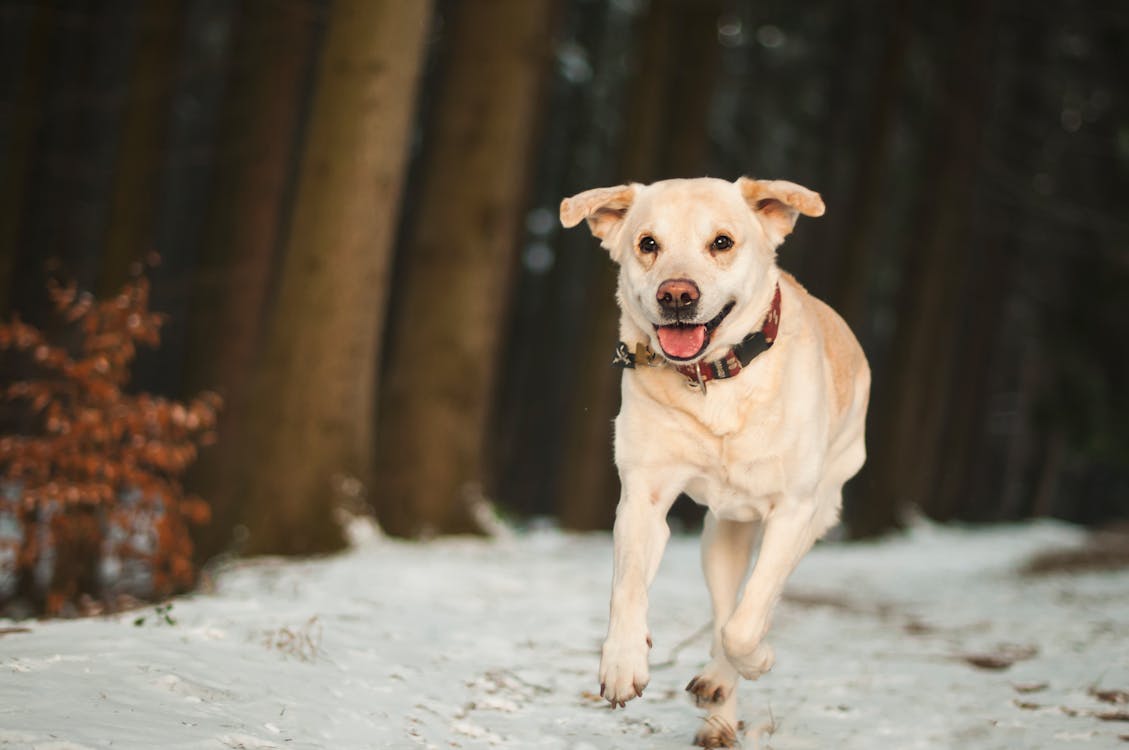
PREREQUISITES
Equipment
There are a few pieces of equipment you need to do this training:
-
A long line
-
A body harness
-
Your dog is habituated to the equipment
-
High-value rewards (food or toys)
-
A human helper assistant (for the later phases)
Communication
It’s vitally important to ensure your communication system is straightened out, too.
So, first, you need a consistent recall cue. In this model, the recall cue will be “Come.” You will use this word every time you prompt your dog to come.
Second, you need consistent markers. I’ve said multiple times in Simpawtico content that feedback is crucial in dog training. More often than not, though, dog owners’ feedback is weak.
For the training progression, you’ll see here I will use the terminal marker “YES!” to indicate that the dog has done what we wanted. Read my article on using feedback for more on how to use markers effectively.
If you don’t have a consistent communication system with your dog, get on it before you tackle any of the steps in teaching recall.
DOs and DON’Ts AROUND RELIABLE RECALL
-
Don’t recall your dog unless you’re sure they’re going to come, you have something for them, or you have some way to make them come.
-
Have rewards with you whenever you’re out with your dog; don’t be caught without the opportunity to reinforce your dog for coming.
-
Don’t recall your dog to end play time in the early teaching stages; they will avoid coming to prolong their fun.
-
You must have control over distractions and competing motivators. Don’t try to “take the show on the road” until you’ve gone through all the progression steps.
-
Practice your recall more than any other behavior. There’s no substitute for practice, practice, practice!
FREE-ENGAGEMENT
Simpawtico’s training system is built on modular patterns. Every new training exercise is an iteration of patterns the dog has already seen, helping them connect the dots much more quickly. Everything we do works under a consistent “operating system.”
Engagement is hands down the most important element to have in place. This is the core, the foundation, the backbone of your whole training system. This is where we foster sustained focus and attention, passion for working together, and establish efficient communication. If you don’t have this dialed in, getting a solid recall will be an elusive, pie-in-the-sky dream.
So, let’s build some momentum first with the Free-Engagement drill. Find space to work, grab tasty food rewards, and get ready to rock.
-
Begin by wordlessly backing away from your dog. Please do not call them. Do not show them the food.
-
If your dog takes ONE STEP in your direction, mark “Yes!” and present a food reward for them to come to get. Do not push the food at your dog; we want them to move into it. Praise them for a few seconds before ending this reward-event.
-
Now move in a different direction and repeat. You should start noticing that your dog not only engages with you faster but stays with you longer. You should see them picking up speed and enthusiasm.
-
Don’t say anything if your dog checks out for a second (this is normal). Just wait. Capture the precise instant their head orients back to you to look with “Yes!” and move into a reward-event. Remember to have them come into you, don’t push the food at them.

You’ll notice that your dog may start getting “sticky.” They start paying attention to your movements and moving faster as they engage with you. These characteristics are exactly what you’re looking for!
You only need short training sessions for this. But once you’ve cultivated spatial gravity and your dog’s focus, and your dog is targeting and moving with energy, you’re already halfway toward a reliable recall.
ADD THE RECALL CUE: FREE-CALL DRILLS!
This is the first exercise we do to start teaching recall after establishing a good working relationship and engagement. You’ll see it’s a new iteration of the Free-Engagement pattern, building off it with new parameters.
You must do this in as distraction-free of an area as you can. Don’t try to call your dog away from something super interesting. Set them up for success. You can have your dog off-leash if this is a fenced yard or another similarly enclosed area. Otherwise, your dog will be on their harness and long line.
In this area, you’ll be walking around casually together. The goal here is to allow your dog’s attention to drift naturally away from you, and then you call them. So, allow your dog to wander around and investigate the environment. Do not attempt to trick your dog into moving away from you. This has to happen naturally. Don’t have a helper call them, and don’t throw a ball. Just make this a “sniff-n-stroll.”
Call your dog’s name as they wander away from you. You should see the “head snap” where your dog immediately looks at you. If you’re not getting the head snap, you may need Name-Recognition training sessions first.
However, if your dog looks at you, say “COME!” once in an upbeat, peppy voice, and point to the spot in front of you.
DO NOT call your dog if you don’t have their attention or you don’t think they will come. If their body language doesn’t look like they’re interested, you’re not ready. Don’t waste the come command! This indicates that you must go back and work with Free-Engagement before you’re ready for recall training!
HERE’S THE SECRET SAUCE TO BUILDING YOUR DOG’S RECALL
In these early exercises, mark the beginning of the Come. When your dog takes their very first step in your direction, say “YES!” Communicate instantly that they’ve done it right while in transit; don’t wait until they get to you.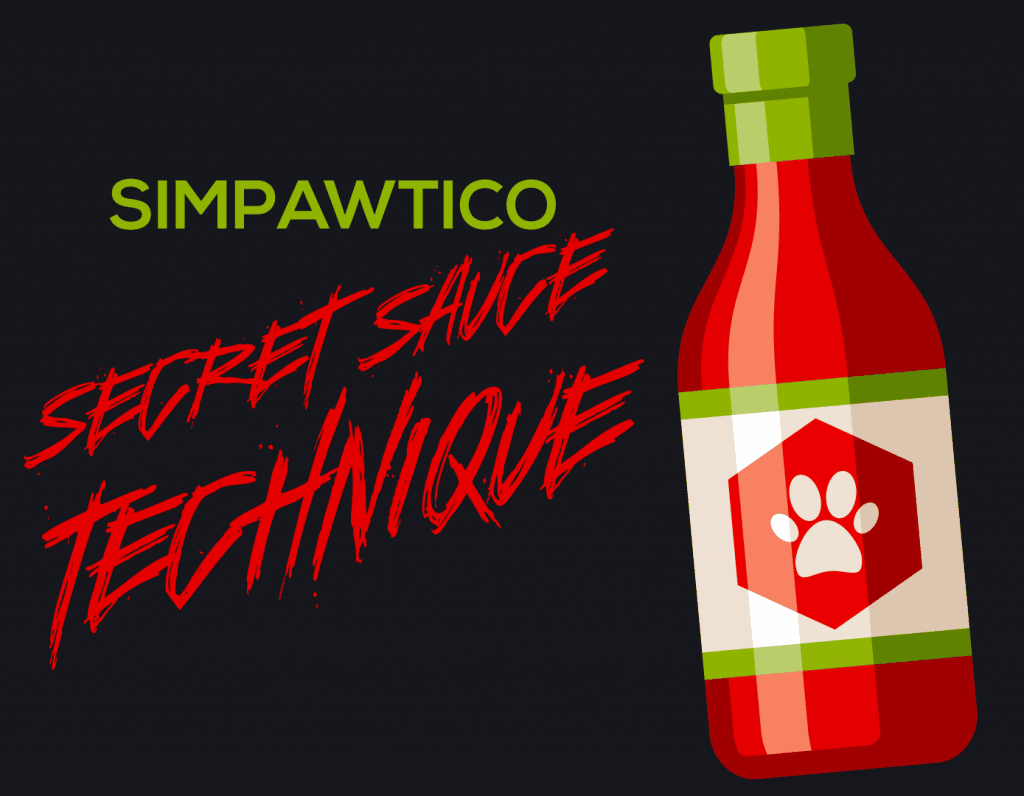
So, once they’ve decided to move, mark it, and present the reward (a target) for them to come to get. This almost guarantees that they’ll come quickly!
Back up a few steps as they arrive to provide some runway, and give at least three food rewards while backing up.
Prolong the duration of this reward-event. This should be long and joyful. Praise and pet enthusiastically; don’t just hand off a piece of food and be done with it. That’s not compelling enough in the long run. The best rewards are interactive experiences, not things.
Then (and here’s the kicker), tell them they can return to what they were doing! “OK, go on!”
In this exercise, “Come” doesn’t mean fun time is over; it’s just an interlude with presents, petting, and praise. This allows your dog to indulge in their interests intermittently during the game. Doing their own thing is actually part of their reward (leveraging the Premack principle)!
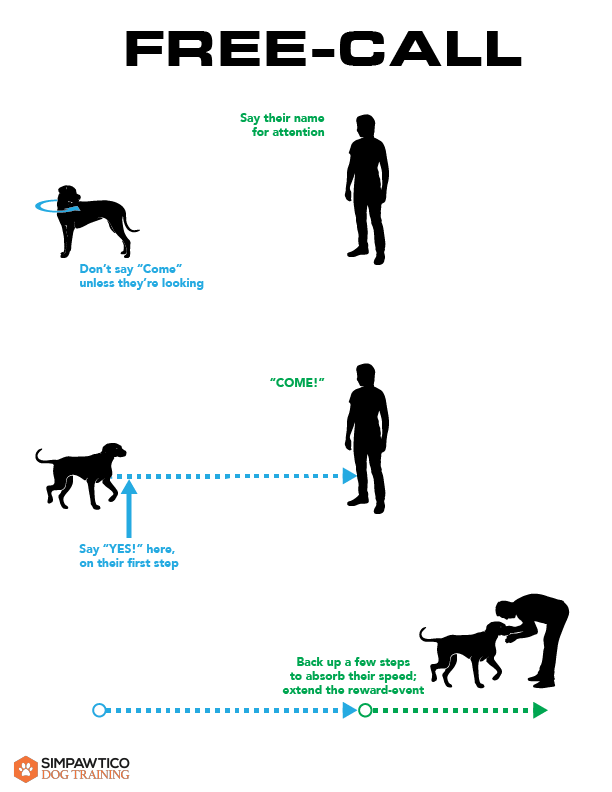
PRO TIP: put some time between each trial. In my experience, people tend to get kind of obnoxious with this, calling their dog every time they get more than a few feet away. If you’re too annoying with this, you’ll actually be doing the opposite of what you want; you’ll drive your dog to ignore you. Cool it, and let your dog enjoy some outdoor time. Put a few minutes between trials.
In most cases, you’ll likely only get about 4 to 5 reps before your dog starts to get sticky. This is actually good! It means you’re cultivating off-leash following as a side benefit. Once your dog is more into you than the environment, you can end the training session.
CALL AWAYS
Your next phase, the Call Away, is where your dog is engaged with something in the environment, and they must choose to leave it to come to you. You’ll need your human helper for this.
The basic Call Away skeleton works like this:
-
Helper presents food to your dog. Your dog begins munching on it.
-
You call your dog, and your helper shuts off access to the bait (in that order)
-
Allow your dog to figure out there’s a big reward waiting for them with you—when they come, mark the first step with “Yes!”
-
Back up as they run to you and present an awesome reward-event.
Your helper has food about 10 to 20 feet from you in this setup. You can do this on a harness and a long leash, but we like to do this one off-leash if possible.
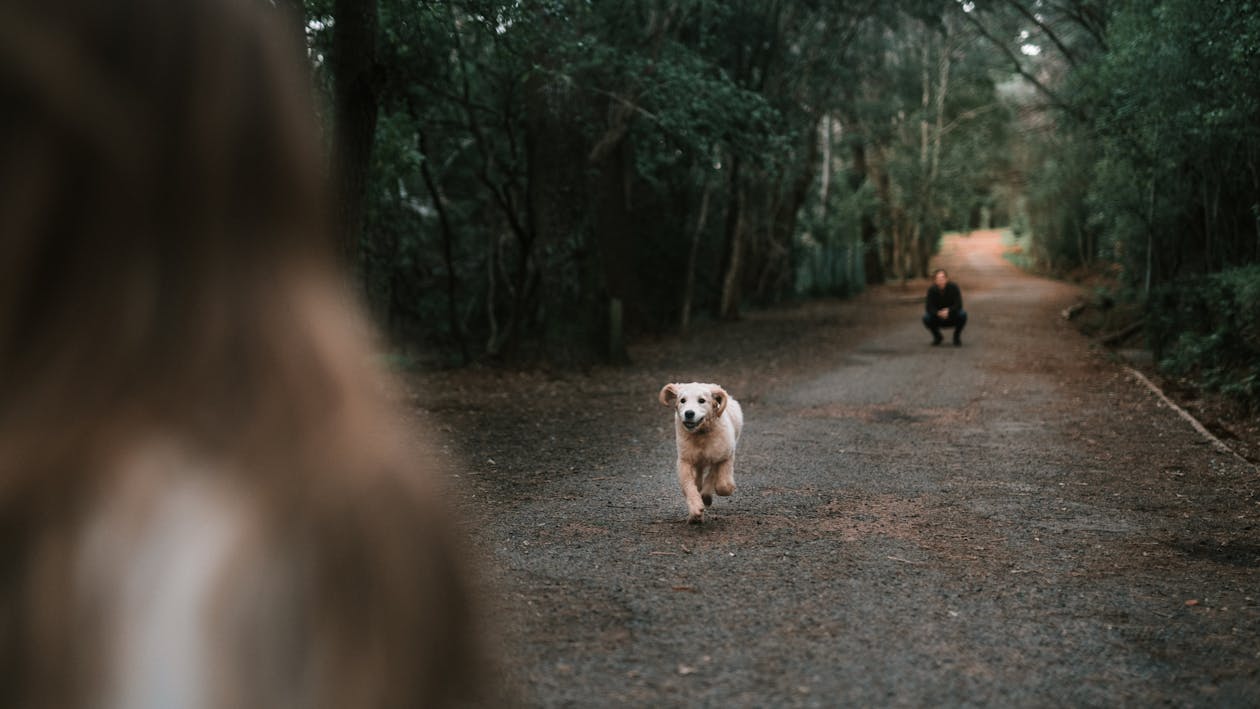
Call Away Procedure in detail
You must control access to all of the rewards. Again, a neutral environment is important here. You also need to pay attention to the hierarchy of rewards—YOU need to have better food or something more motivating than the helper’s bait. Use better food, your dog’s favorite toy if that’s super motivating, and/or a bigger reward-event.
In the beginning stage, the helper doesn’t even give out the food; they just have it. Your dog will be over at the helper investigating.
Then, call your dog ONE TIME. Do not nag them; allow them to work through it and decide that—between you and your helper—there’s better stuff with you. To aid in this, your helper must be very still and boring.
When your dog turns around and commits to coming, mark with “Yes!” while they’re in transit, present your hand target, back up to absorb the speed, and move into a great reward-event.
Later, you can increase the difficulty a little by allowing your dog to eat some of the helper’s food. You’ll call when your dog has eaten some of the bait, and the helper will close their hands, blocking access (in that order). At all times your helper is very still and boring. This makes staying with them non-rewarding and moving back to you much more appealing.
You’ll eventually progress to the helper not needing to close their hands at all. Your dog should peel away when called because they have developed a conditioned expectation of greater things behind them with you when they hear the verbal cue.
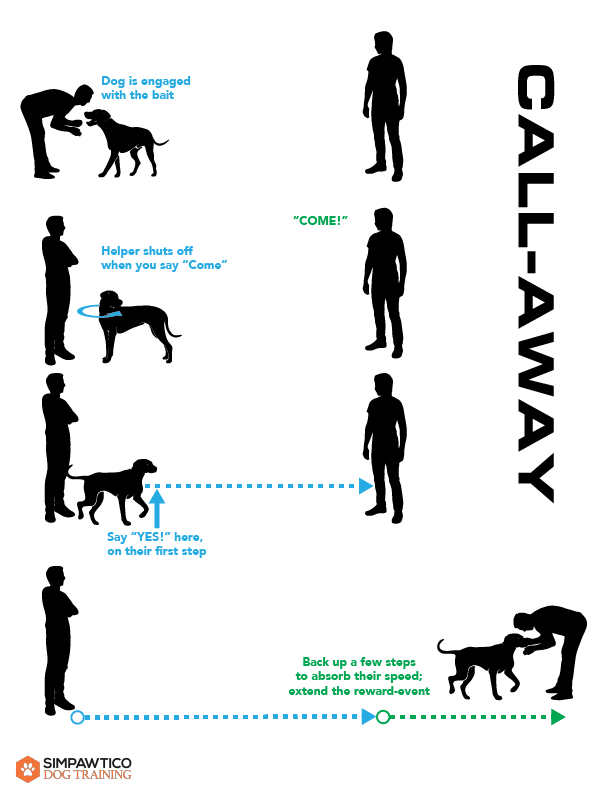
Now, CONTINUE WORKING!
Increase the stimulation level by working with a higher-value object at the helper’s end. However, always ensure the bait at your end is better toys or better food.
When the helper uses a toy, they’ll shut off their energy by freezing (the same way you would when training a “Drop It” during Tug).
You may see some hesitation in your dog. No corrections! Don’t nag! Just WAIT. Dogs learn to make good decisions by making decisions. So, wait for your dog to make the right decision and reward them big for it.
CALLING OFF
In contrast to a Call Away, a Call Off has your dog change direction en route to the competing motivator. This is much more difficult even than the Call Away because their “chasing” circuit is activated, and they’re moving away from you. Overriding this takes patience and a good training setup.
Call Off Procedure
We do this initially on the long line and harness (even if you’ve done the other segments off-leash). As before, your helper presents competing motivators, and your dog moves towards what they want without restraint.
Initially, your dog can get what they want; they get to move through to the helper without you calling them back to you. This builds the expectation that they will get what they’re after and that there is a purpose for the exercise. If you were to Call Off right away every time, then your dog would learn to anticipate the command, and you’ll get false positives. Let them have it a few times.
After a few trials, while your dog is en route, call them (“Come!”). Simultaneously, the helper blocks access while you stop the line. That’s three things that all happen in rapid fire.
“Come!” > Helper blocks access > stop the line
Your dog will likely hesitate when the line stops them, and they’ll look back. After a second, they’ll choose to come to you. Don’t repeat the recall cue, and do not reel them in; allow them to think through it. They need to figure out how it works (and you don’t want to denature the prompt after you spent so long teaching it!).
Remember: the long line is a brake, not a fishing line. Do not reel your dog in. Allow them to make a decision. Only pick up slack as they move toward you; be ready to hit the brake again if your dog wanders.
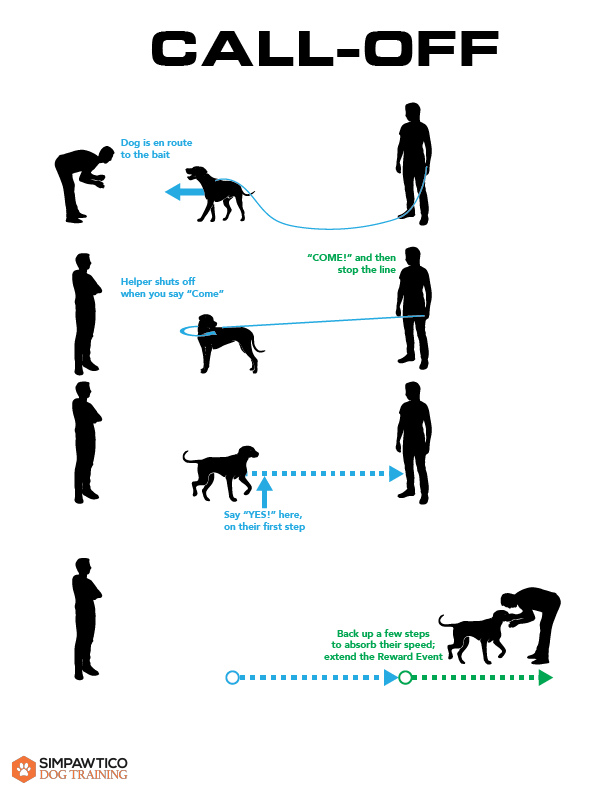
Also, it’s important to mix in trials where you do not call your dog, and they’re allowed to move all the way to the helper. This maintains the quality of your practice, removing false positives and keeping your dog responsive.
Continue doing Call Offs until the long line is no longer necessary. Your dog will begin changing direction on their own when you call them. At this point, trials can be done off-leash. Then, you can challenge them by raising the stimulation level or letting them get closer to the bait before calling them.
REMEMBER:
-
NEVER CONNECT TO THE COLLAR FOR LONG LEAD TRAINING; ONLY CONNECT TO A BODY HARNESS!
FINISHING AND PROOFING
Generalization
With reliable recall, the hardest part is generalization. You must change the picture so your dog understands how to do it in other contexts. If you only do it in one environment, your dog will get really good in that one place. This does not guarantee reliability everywhere in the world (especially at the local park!).
So far, you’ve had complete control of distractions. You’ve also had control with a long lead and blocking access to distractions. NOW, you’ll work with more distractions, although you want to retain SOME control. Don’t go from only a few distractions to pandemonium—you will fail. Introduce more distractions slowly.
Making that transitional work successful is contingent on THIN-SLICING the changes. It should be a gradient your training progresses through, not a stark contrast. It’s gradual, and you’ll probably need to make course corrections along the way. This is the way of it.
Reintroduce Training Aids
You may also need to reintroduce training aids such as the long lead and better rewards. If you can do it off-leash in your practice environment, that does not guarantee you’re fully ready for off-leash freedom elsewhere.
Distance
Distance is also a major factor in recall work. Understand how it works in a dog’s brain and make concessions. Plan ahead. In some cases, simply closing the gap a few feet and reinstructing is all you need to do to get a successful trial. Start with smaller distances in your new environments, or use stronger bait. Progress over time to longer distances.
Crank Up the Play
In the beginning, the level of play is likewise much higher. We have to condition recall to be an enjoyable thing to do on its own before using it in stressful environments or emergencies. Remember to make those reward-events prolonged and joyous. Milquetoast rewards will not serve you well in the long run!
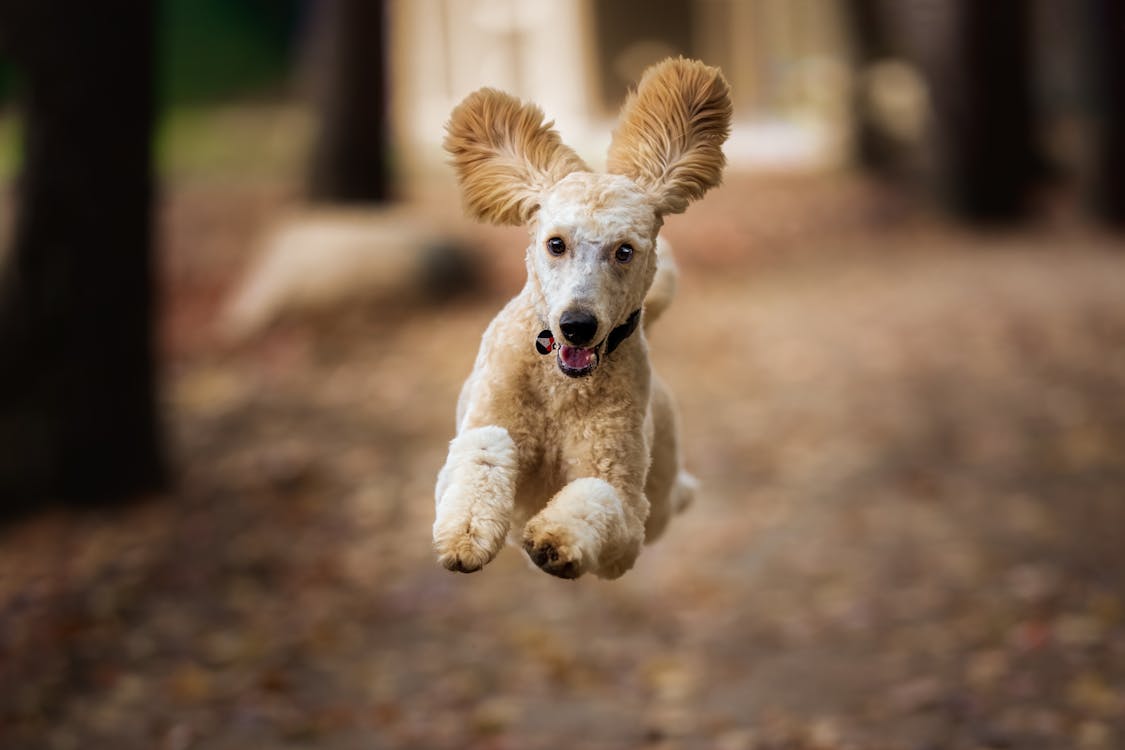
Keep Your Dog Safe (and Yourself Calm)
Don’t ever reprimand your dog when they come to you, no matter what they were doing when you called them. If your dog was getting into mischief, and you called them away from it, and then you get mad at them, they’ll think they’re in trouble for coming! You’ll start unraveling all of your hard work. Get control of your emotions and keep your dog out of trouble in the first place!
Delay the Terminal Marker
Gradually delay your marker as you work. So far, you’ve been using “Yes!” immediately upon movement in your direction. Move this marker closer to you as you work. As with any extended training, you want to start squeezing more work out the setup. Eventually, you’ll recall your dog and hold off on the “Yes!” until they actually get to you.
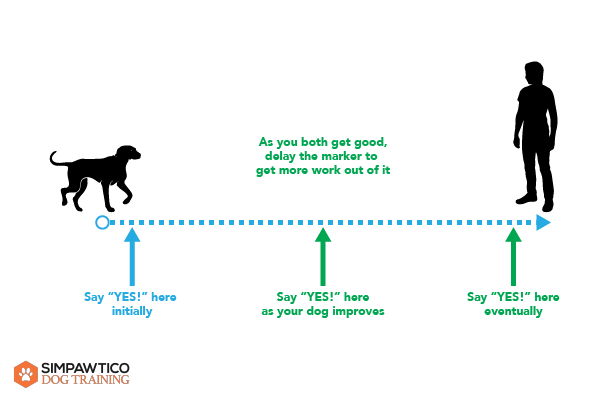
OPTIONAL: ADDING TERMINAL BEHAVIORS
Until now, you’ve been calling your dog into reward without any additional requirements besides just going from point A to point B. For most dogs, this is perfectly fine, and you could stop there. However, if you like, you can add terminal behaviors. These are additional “finishing moves” you can append onto the end of your dog’s recall:
-
FRONT — your dog comes and sits in front of you.
-
HEEL — your dog comes directly to the heel position, sitting next to you, facing the same direction. This can be a straight heel (directly to the heel position), a “finish” (around the back of you), or both.
-
PLACE — your dog sits between your legs, facing the same direction, looking up at you.
Teach these behaviors separately, away from the recall work; your dog must know them beforehand. When you’re ready to append a behavior to the end of recall, chain it all together:
-
Cue the recall (“Come”)
-
When your dog gets to you, use your support marker (“Good”)
-
Cue the terminal behavior (“Sit” or whatever it is)
-
Terminal marker (“Yes!”)
-
Reward-event
Ideally, you should be able to fade your support marker over time (just the same way we roll it back during a stay or in heeling training sessions).
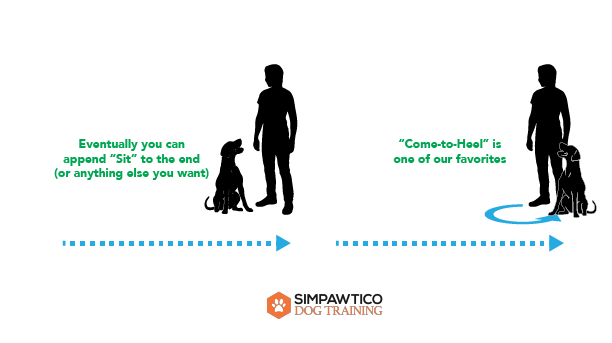
On a side note: heel training at Simpawtico usually evolves into a come-to-heel over time anyways. We get that heel position so well conditioned that we can start prompting it at a distance. It’s a super thing to have in public; people think you’re a wizard when they see it!
ADJUNCT STRATEGIES FOR RECALL
As the saying goes, there’s more than one way to skin a cat. Here are some fun activities you can do on the side to build your recall even stronger:
Come-Front maneuvers
A Come-Front is a leash exercise. In this, you suddenly start moving in reverse while your dog drifts forward. Then they U-turn and move to sit in front of you. This is a super thing for every dog to be fluent in. This helps build your spatial gravity and gets fast front-sits amidst distractions.
Runaway Recalls
Think of this exercise as a high-speed, dynamic Free-Call game. While you’re out together—on a leash or off—randomly burst into movement away from your dog and call them to come with you. Mark “Yes!” and reward them in motion. This is best done on a long leash, retractable, or with your dog off-leash.
Tug/Fetch
I love teaching every dog Tug. It’s a great way to get high-density mental and physical stimulation and builds impulse control. Incidentally, Tug can also become a super obedience reward that works beautifully with reliable recall training. Also, I typically back-chain a retrieve with Tug, allowing it to act as a kind of “bargain-basement” version of the come command. See my “Tug Tips” PDF for more.
Hide & Seek
Hide & Seek is stupendously fun for you and your dog and builds some great skills. They learn impulse control, help with proofing stays and cultivate more of the owner-gravity essential in building your dog’s recall. Take a look at my article and video on it.
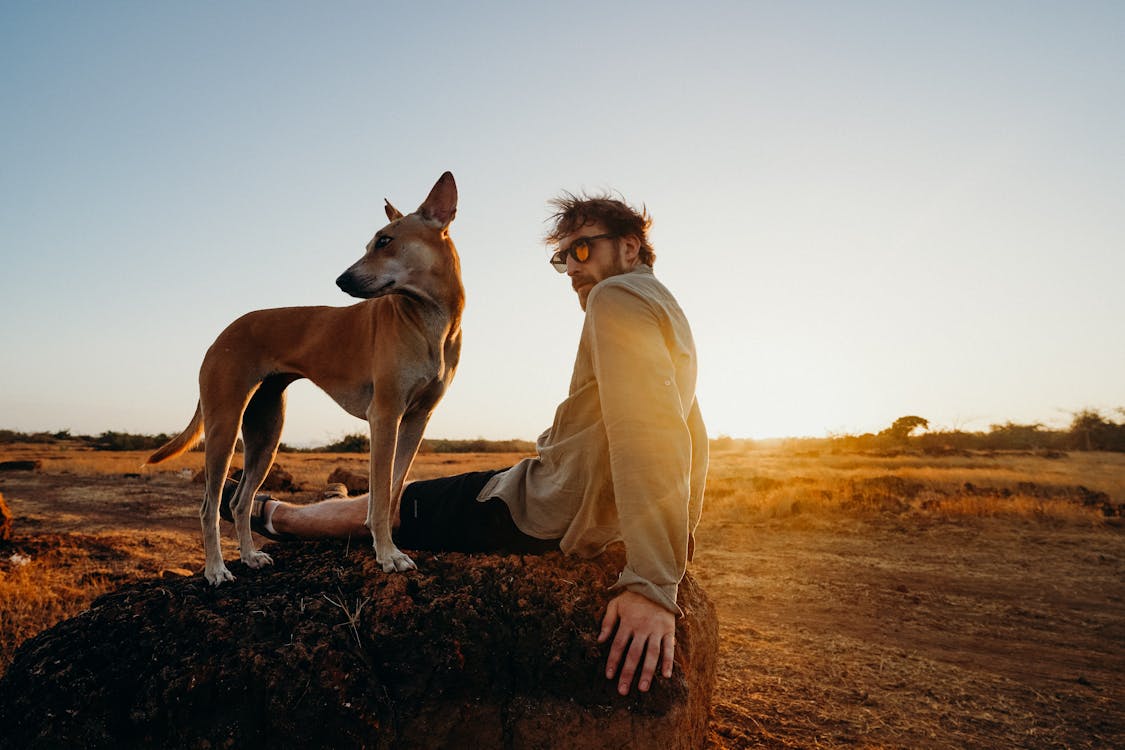
GOOD LUCK, and HAVE FUN!
Teaching your dog to come when called is a fundamental skill with many applications. It’s also a great way to bond with them. As you move through your engagement, Free-Call, Call Away, and Call Off, be sure to always use positive reinforcement-based methods and put in the time for practice sessions. Now that you know how to train your dog a reliable recall, I hope you try it. It’s a practical behavior, and teaching it will be a rewarding experience for both of you.
Also, get the free pdf version of this article on the Downloads page!
If you need help or want to share your successes (or failures), drop a comment below! Or, join me Fridays at noon, Eastern time, for live “Cyber Office Hours” on Facebook. I can’t wait to hear from you!
As always, keep learning, and keep practicing. Thanks for reading!


